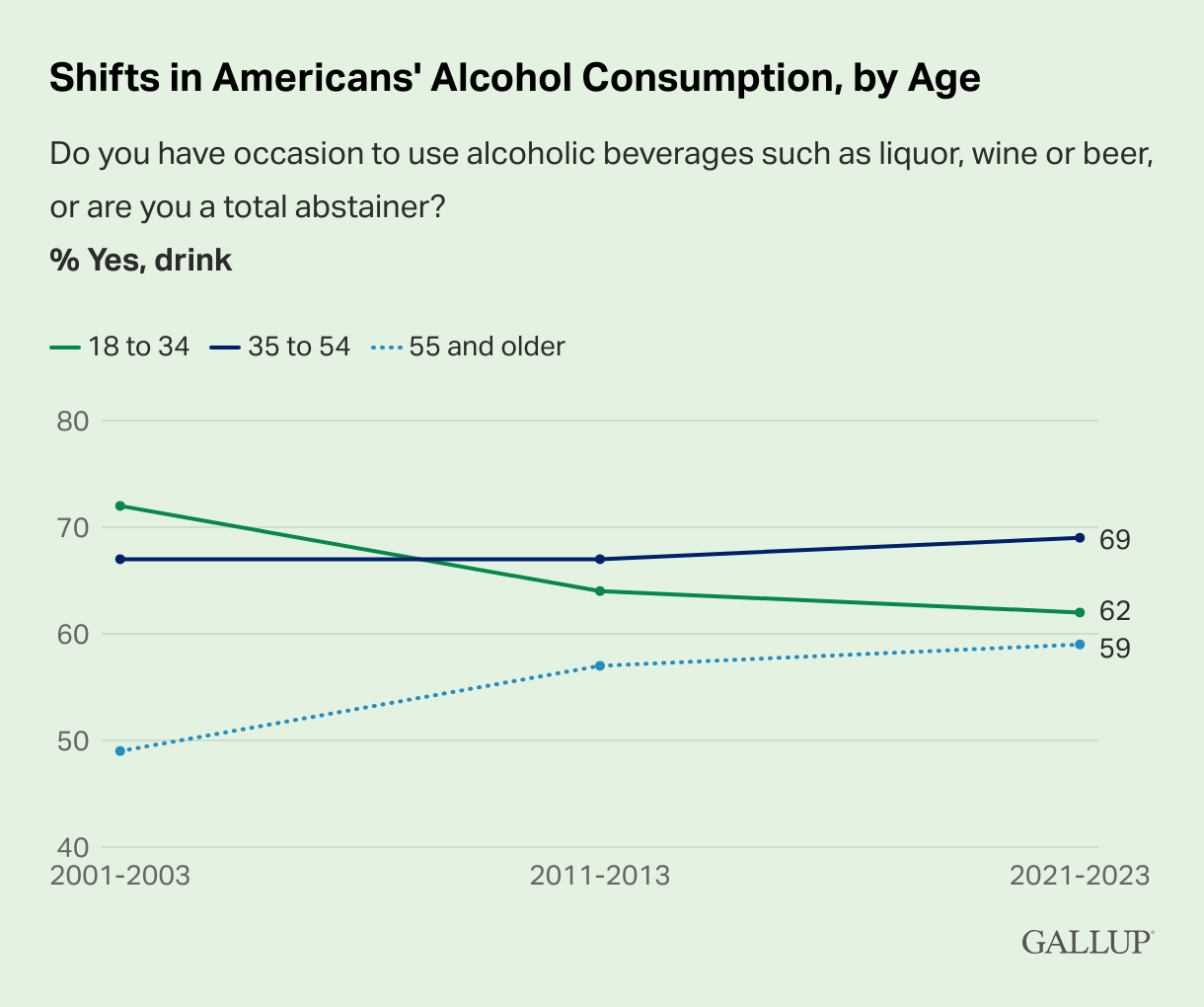April is National Alcohol Awareness Month, a good time to think about your drinking and the impact on your overall health and well being. If you’re sober-curious, we have some resources to help. (Updated February 2025)
Gallup has tracked Americans use of and attitudes towards alcohol for more than 8 decades. In its most recent report, it found that 62% of Americans currently say they drink alcohol, a rate which is consistent since 1939. On average, U.S. drinkers report they had four drinks in the past week. Of those who do drink, alcohol misuse remains a significant problem. The National Institute on Alcohol Abuse and Alcoholism reports that 28.8 million adults aged 18+ (or 11.2%) had an Alcohol Use Disorder (AUD) in the past year. In addition, approximately 140,000 people die of alcohol-related causes annually.
Alcohol use is pervasive in our society, accepted as an everyday part of life. There’s an expectation that alcohol will be an integral part of celebrations, vacations, and important events; there’s also been a certain level of tolerance for misuse. Yet attitudes appear to be changing.
Gallup reports that young adults today are less likely to drink than young adults two decades ago:
“Gallup’s long-term measure of alcohol consumption asks U.S. adults whether they “ever have occasion to use alcoholic beverages.” While the national average has been steady in the low 60% range for over 40 years, the age trends reviewed for this report show that the rate has declined 10 percentage points over the past two decades among younger adults, aged 18 to 34, falling from 72% to 62%. Meanwhile, the percentage of drinkers has increased by 10 points among older adults, those 55 and older, going from 49% to 59%.”

In addition to these changes, a growing number of people are exploring “sober curious” or “mindful drinking” lifestyles, with a survey showing that 41% of respondents indicating that they plan to drink less in 2024. These cultural changes can be seen in the growing popularity of ‘Dry January” and “Sober October,” as well as a growth in demand for “mocktails” and other non-alcoholic beverages. Both sober curiosity and mindful drinking are rooted in a desire for a healthier lifestyle. They entail either temporary / intermittent non-drinking or an ongoing awareness and questioning of the frequency and quantity of their drinking.
This trend is particularly welcome news because during the pandemic, drinking rose precipitously, with alcohol related deaths reaching a high point:
“… the number of deaths caused by alcohol skyrocketed nationwide, rising more than 45 percent. In 2021, alcohol was the primary cause of death for more than 54,000 Americans, causing nearly 17,000 more deaths than just a few years before, in 2018, according to data from the Centers for Disease Control and Prevention.”
Are you feeling sober curious?
If you’re feeling sober curious or you’d like to practice more mindful drinking to improve your health, here are some steps you can take.
- Learn more. See our blog post Alcohol and Your Health
- Take an online self -assessment such as Are You Addicted? Take the Test.
- A Beginner’s Guide to the ‘Sober Curious’ Movement.
- ‘Sober Curious’: What Does It Mean to Explore Life Without Alcohol?
- ‘Sober Curious’? How to Embrace Mindful Drinking (free access for 30 days)
- 5 Mindfulness Tips for Moderate Drinking
Resources for Members of ESI EAP:
- Call your EAP counselor or coach to help you make a plan to quit or reduce your drinking.
- Log in to www.theEAP.com to explore the Substance Misuse Learning Center.

